When trying to find your perfect running shoe there’s always a question of which brand is right for you. New Balance vs Nike running shoes is going to provide you with some very different options. Let’s compare models in different categories to help you make a choice.
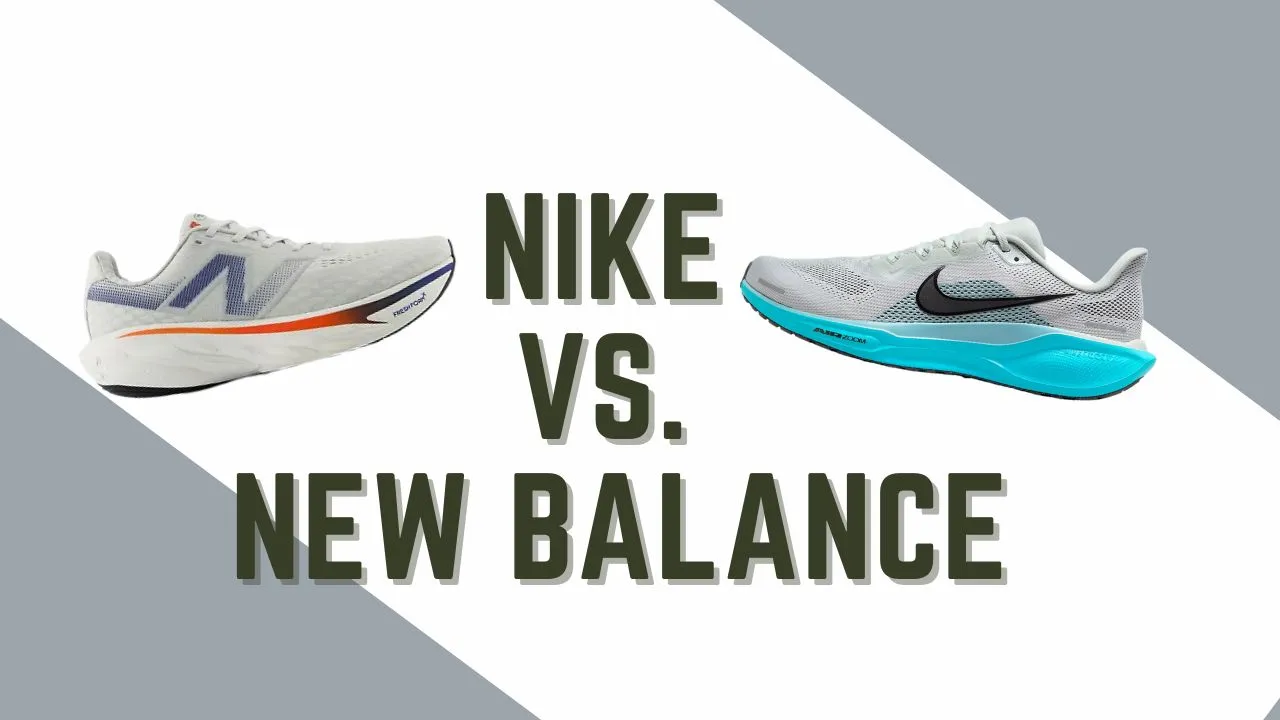
Both brands have a long history, things people love and things people dislike.
And like every running shoe brand they tend to have moments where they seem to be the dominant running shoe. This has a lot to do with marketing or getting lucky with a superstar athlete wearing their gear on a main stage performance (Olympics, NYC marathon, etc).
When it comes to these two brands, I think it’s key to know that both have continued to change an adapt. So if you’ve tried one previously without luck, you might need to be willing to test a new model.
Main Differences New Balance vs Nike
Nike and New Balance have a similar range of shoes, but a very different fit and feel. Maybe some of the difference is simply in the way that they market, which makes you feel differently about the gear.
I break down the differences in more detail below, but here’s a quick overview:
New Balance Running Shoes
- Offers wider shoes than most brands
- Thicker midsole provides more stability
- Makes more shoes in the US than any other brand
- Also big in the athleisure market
Nike Running Shoes
- More narrow fit, especially in the heel and midsole
- Tend to run smaller in width and length than many other brands
- A larger focus on newest and trendiest technology to “improve running economy”
- Known across a wide variety of sports and highly visible in competition
- Has a large brand loyal following
Is Nike Better Than New Balance?
Nike has been dominating the elite running world for many years, so the question is do they have shoes for the rest of us?
100% they have a variety of shoes for different runners. And while you might see far more elite runners in Nike gear, New Balance is an equally great running shoe for most of us. The shoes worn by elite runners are often custom made, specific to a team or sponsored.
I admit to having a deep love for New Balance as I helped to create their first ever online Wear Test program back in my consulting days!
And for many years I was not a fan of Nike, but about 5 years ago I discovered a Nike shoe that has become one of my go-to shoes. I’ve had 8 pairs now, you’ll see it listed in the comparisons!
I’ve worn both brands and will add some personal thoughts, along with comparable models from each brand at the end.
New Balance vs Nike Feature Comparison
Both brands have been around for a very long time and are leaders in running shoe design. They both offer various technologies to aid with comfort, support, stability, and cushion.
They differ in both fit and technology.
Here is a breakdown of each shoe based on the components buyers need to consider when purchasing a running shoe.
It’s gonna get a little TECHY…so you can just skip on down to the specific model comparison if you want, but personally if I’m shelling out $150 for shoes, I kinda want to know why.
Durability
The lifespan of shoes from both companies is fairly comparable.
- New Balance shoes have a life expectancy ranging from 300 to 500 miles, or three to six months, depending on your monthly mileage.
- Nike’s Vapor Fly is only going to give you about 200 miles, but most shoes are in the 300-500 mile range
Determining when to replace running shoes, of course, all depends on your gait, weight, and whether you run mostly on trail or road.
Breathability
New Balance uses what is called a Hypoknit upper which offers the moisture wicking and breathability you want in your long run shoe.
Nike has transitioned to FlyKnit for many of its shoes. It’s a more form fitted style, which means some areas are designed to be thinner and breathable while others are thicker for support.
Across MOST running shoes, the only time you now won’t find them to be breathable is if you get to Gore-Tex shoes that are designed to be water repellent or water resistant.
Fit
New Balance is one of the few running shoes that offer wide widths and go up to a lot more sizes. This is one reason they are so popular among workers.
Note, they also offer 2A which is extra narrow. And like most brands, they have a shoe finder to help you decide what might be the best fit.
Additionally, their shoe numbering system actually means something!! The last 2 digits tell you about the type of shoe.
40 (Optimal Control):
Shoes in this category provide superior control, stability, cushioning and support for biomechanical needs, such as pronation or low arches (e.g., 940, 1540).
50 (Fitness Running):
For training on roads or for indoor workouts, the 50 series offers the combination of visual attitude and innovation with the responsiveness and power athletes need.
60 (Stability):
Designs that offer industry-leading stability to reduce pronation while also providing unparalleled cushioning and comfort (e.g., 860).
70 (Light Stability):
The perfect combination of stability and speed, all in a lighter, sleek profile designed for runners who train at a faster pace (e.g., 770).
80 (Neutral):
For high-mileage runners who require light shoes and the protection of superior cushioning (e.g., 1080).
90 (Speed):
For faster runners who want every advantage, including a superior ride and fit. The choice styles for professional and nonprofessional speed and distance runners (e.g., 890).
Nike running shoes are often reported to run small.
They do not offer the variety of widths that you’ll see with New Balance. But if you like the fit, you’ll find it fairly consistent across models.
 This is an older, yet still very USEFUL graphic from the Huffington Post.
This is an older, yet still very USEFUL graphic from the Huffington Post.
I forget we may not all know the lingo when talking about different components of the shoe and why they matter.
Cushioning
New Balance utilizes Fresh Foam and FuelCell foam depending upon the shoe. Both are designed to provide a lot of cushion without the weight. FuelCell is a nitrogen infused foam which provides additional softness and responsiveness.
Nike started putting air in their shoes back in 1977 to improve cushioning.
“Nike Air technology consists of pressurized air inside a tough yet flexible bag and provides more spring without compromising the structure.”
And since the 90’s they’ve been recycling waste material from production in to new shoes. They continue to look at this sustainability in developing new shoes.
Stability
New Balance utilizes a couple of tools to provide stability. The first is that similar to HOKA all of their shoes have a bigger platform, which naturally means more stability.
Then they have an S Curve to help with that side to side stability and a Ultra Heel that flares away from the ankle for comfort, while keeping your heel firmly in the shoe.
Nike does say their stability shoes are slightly wider and also designed with a curve that will help with heel to toe transitions.
As you may know, I’m not a huge fan of stability shoes for most runners. I am not finding a big difference in brands, they are all focused on preventing that foot roll and often feel a little stiffer.
Affordability
New Balance prices range between $80 to $130, while Nike start at a slightly higher price at $120 to $180.
The most popular models for both brands are priced toward the higher range. Carbon fiber shoes and often trail shoes will go beyond those rates, like the Vapor Fly which is over $200.
You’ll notice that every brand offers a range and this is indeed due to a difference in technology and where they sell the shoe. They know that the big box store can sell the shoe with less in it, while the local running store needs to be best for dedicated runners.
Nike Vs New Balance Running Shoe Models
Now that you know more about each brand, let’s look at their top models in each of the main categories. There’s no winner declared here because all are great shoes, it’s just about which one is best for your foot.
Did you notice I even said the brands in reverse order this time…seriously no favorites, I have run in both brands many different times over the years.
Quick note, I absolutely encourage you to checkout Nike’s return policy! It makes it much easier to test out a shoe and return if it doesn’t feel right.
Stability Running Shoe
👉Nike Structure 26
Nike has updated their line up and you’ll find that the Structure is their new series for stability shoes, replacing the Invincible line up. According to Nike, the Structure 26 is the go-to choice for runners seeking stability and cushioning. They removed the previous models AirZoom profile and added a full length ReactX midsole. 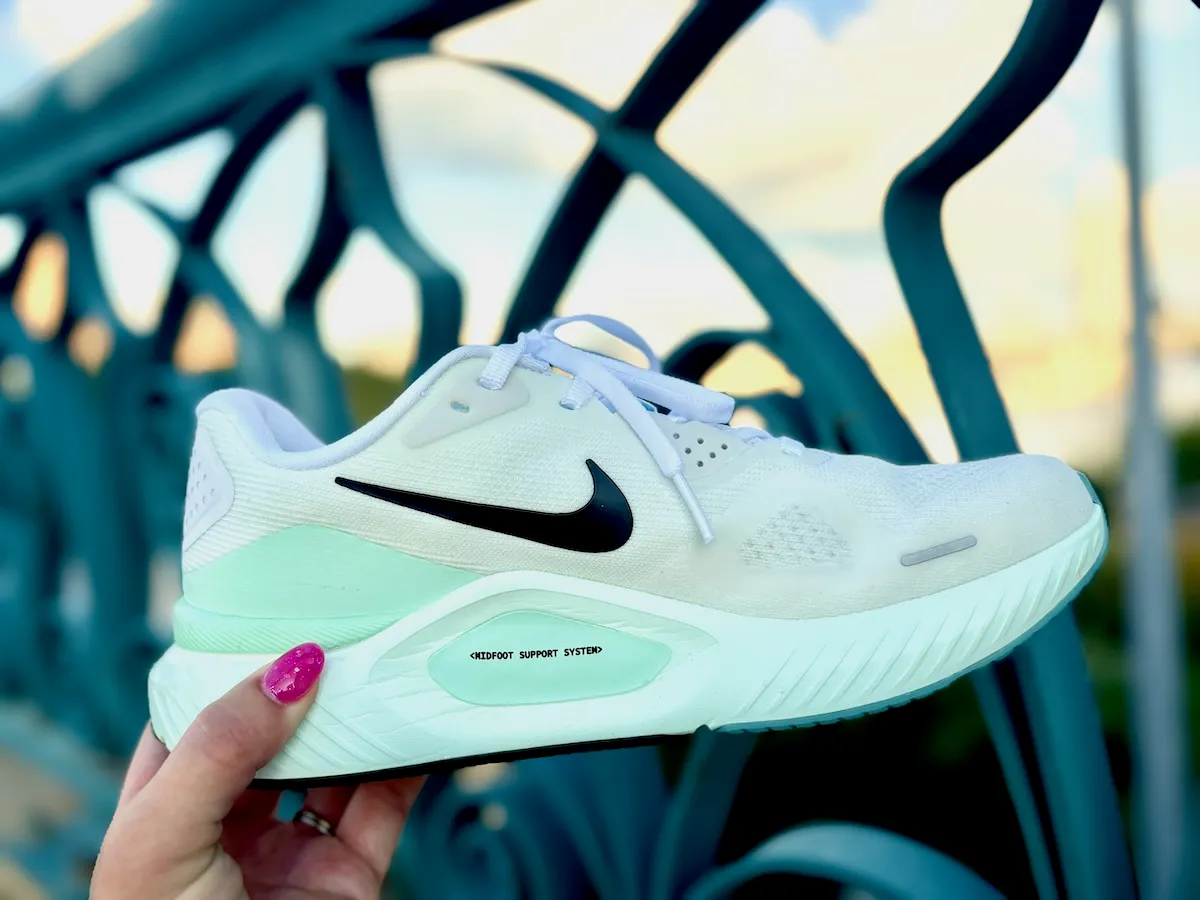 In terms of support, Nike has shifted away from rigid posts and instead uses its Midfoot Support System, which wraps the foot in two areas; the lateral rear heel and the medial midfoot. This delivers guidance and stability without ever feeling overbearing.
In terms of support, Nike has shifted away from rigid posts and instead uses its Midfoot Support System, which wraps the foot in two areas; the lateral rear heel and the medial midfoot. This delivers guidance and stability without ever feeling overbearing.
And you’ll appreciate that support, because the Structure 26 carries its highest stack height to date—38 mm in the heel with a 10mm drop.
- Weight: 11.3 oz Men’s, 9.2 oz Women’s
- Heel Drop: 10 mm
- Available in 6 Colors
- Available in wide
- Available on nike.com for $145
- Checkout our full review of the Nike Structure 26 >>
👉NB Fresh Foam 860 v14
Yes the number matters! 880 is not the same as 860 or 1080.
With their newest Fresh Foam X it makes for a lighter stability shoe, while still offering the motion control and responsiveness you need. When a shoe is too plush, it’s hard to provide the stability in the arch that prevents your foot from falling inward.
- Weight: 10.8 oz Men’s, 8.7 oz Women’s
- Heel Drop: 8 mm
- Available in core and seasonal colors
- Available in narrow, wide and extra wide (in limited colors)
- Available on Newbalance.com for $140
- Read our full review of the New Balance 860 v14 here>>
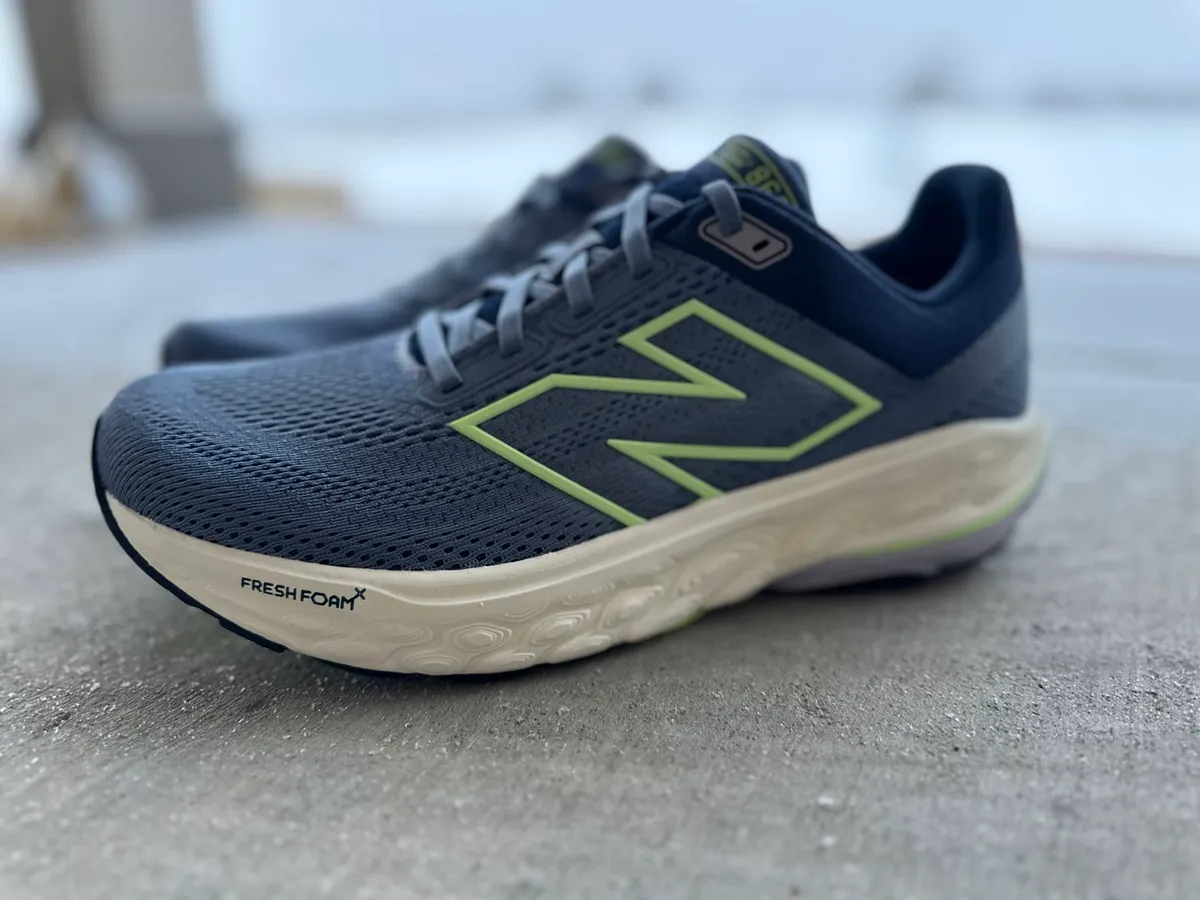
Neutral Running Shoe
👉Nike Pegasus 41
One of their longest running models that runners come back to time and again.
It has enough cushion to make it great for long runs, but isn’t so plush that you lose the spring you want off the ground.
Reviewers have said the newest model has an improved upper for more foot space, including in the toebox.
- Weight: 10.4 oz men’s, 8.6 oz women’s
- Heel drop: 10mm
- 5 colors available
- Available in Extra Wide
- Available from Nike.com for $140
- Read our full review of the Nike Pegasus 41 here >>
👉NB Fresh Foam 880 v15
While some runners are flocking to carbon plated shoes, we simply don’t want those as our every day trainers.
We want something that is solid and dependable like this neutral shoe that also has a great wide toebox, allowing you to get full power out of those feet.
It’s going to have enough cushion for long runs without being overly plush and still providing just a hint of stability with the bigger platform. I can concur from my running in fresh foam that you absolutely notice the cushion, but it’s still a solid shoe.
File this under your great every day trainer.
- Weight: 10.7 oz men’s, 8.4 oz women’s
- Heel drop: 6mm
- 7 colors available
- Available in Wide and Extra Wide
- Available from newbalance.com for $140
- Checkout our full review of the NB 880 v15
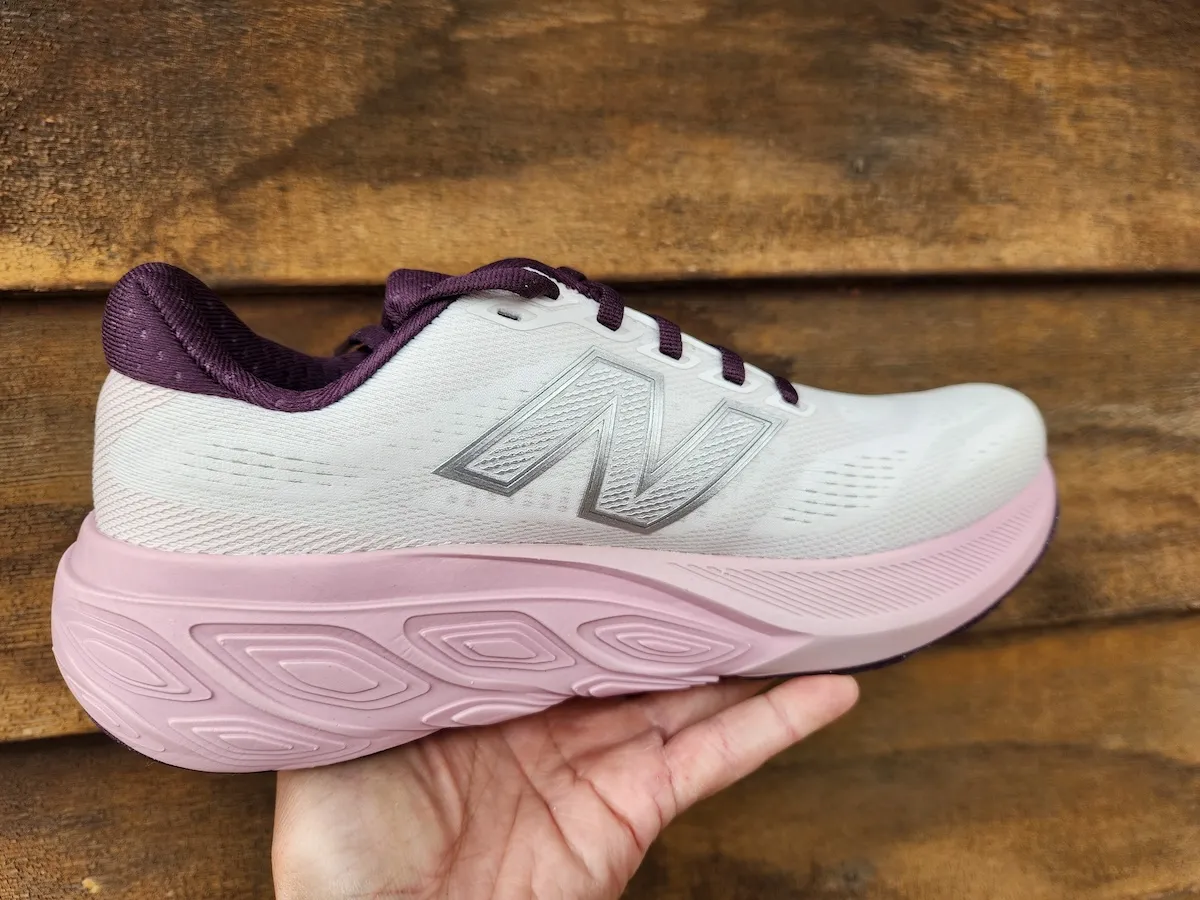
Cushioned Running Shoe
👉Nike Vomero 18
For 2025, Nike is moving to a new system of naming and creating shoes. You’ll see that for the everyday runner there is now the Structure for stability, the Vomero for that max cushion feed and Pegasus for the responsive ride. Within each of these, over the year you’re going to see Premium, Plus and Icon model of the shoe.
While it looks like a beast of a shoe, it never feels heavy or clunky underfoot. I’ve run everything from an easy 3 to a longer 12 miles and enjoyed it. I would happily take it out for 20 when those days return.
- Weight: 9.3 oz women’s, 11.5 oz men’s
- Heel drop: 10mm
- 6 colors available
- Not available in Wide
- Available at Nike.com $150
- Read our full review of the Nike Vomero 18 here >>
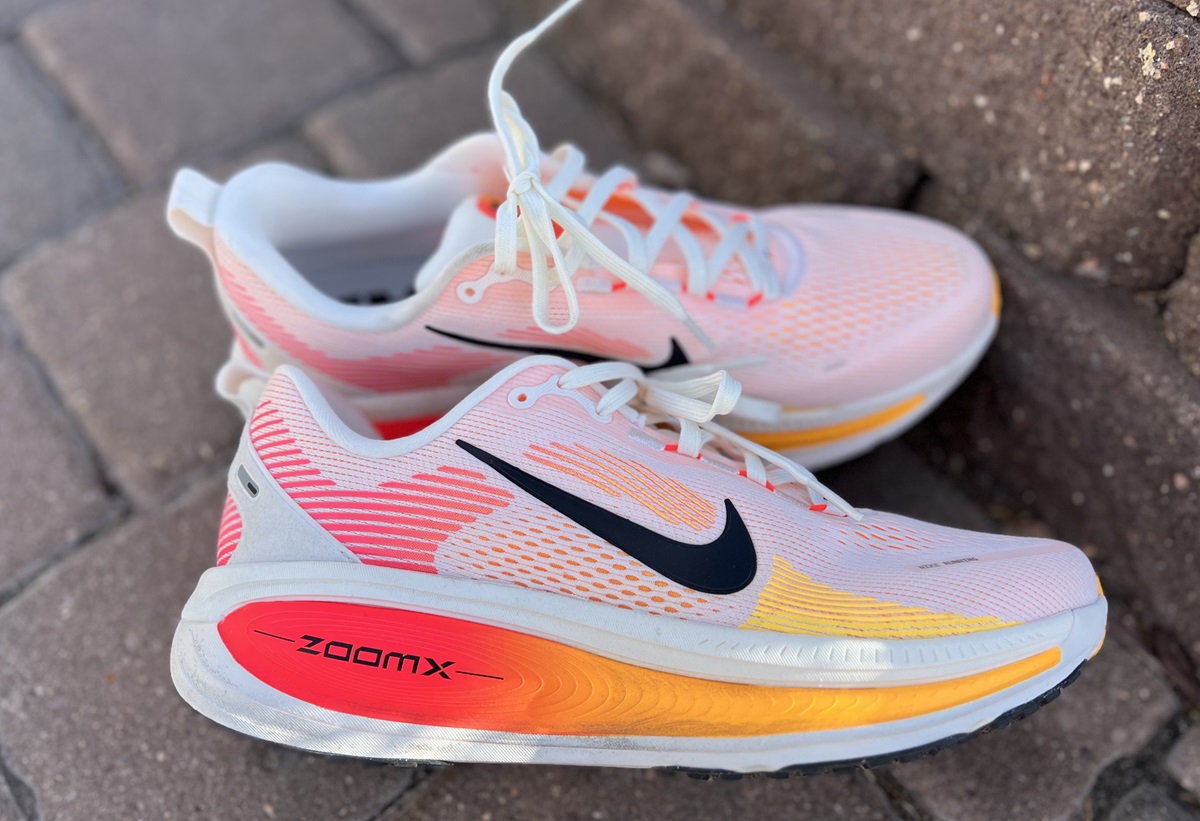
👉NB Fresh Foam 1080v14
Listen, I like a good cushioned shoe and this one fits the bill. It’s become one of my go to long run shoes.
The New Balance 1080v14 is a great cushioned daily trainer that can go for miles. It’s a solid long run shoe pick for runners who enjoy a more max cushion feel.
I’ve actually gone through 3 pairs of this shoe in the last few years. The rave reviews make complete sense to me as someone who likes a similar, but slightly less cushioned shoe with the the Nike Epic React that I wore on repeat for years.
The Fresh Foam midsole provides excellent cushioning and shock absorption, making it perfect for runners who enjoy long-distance running. Remember this isn’t a plush shoe, but cushion that still responds. The upper part of the shoe is made of Hypoknit, which is a soft and breathable material that provides a comfortable fit.
- Weight: 10.5oz Men’s, 8.3 oz Women’s
- Heel Drop: 6mm
- 8 Colors available
- Available in Wide and Extra Wide
- Available on NewBalance.com for $165
- See our full review of the Fresh Foam 1080v14 here >>
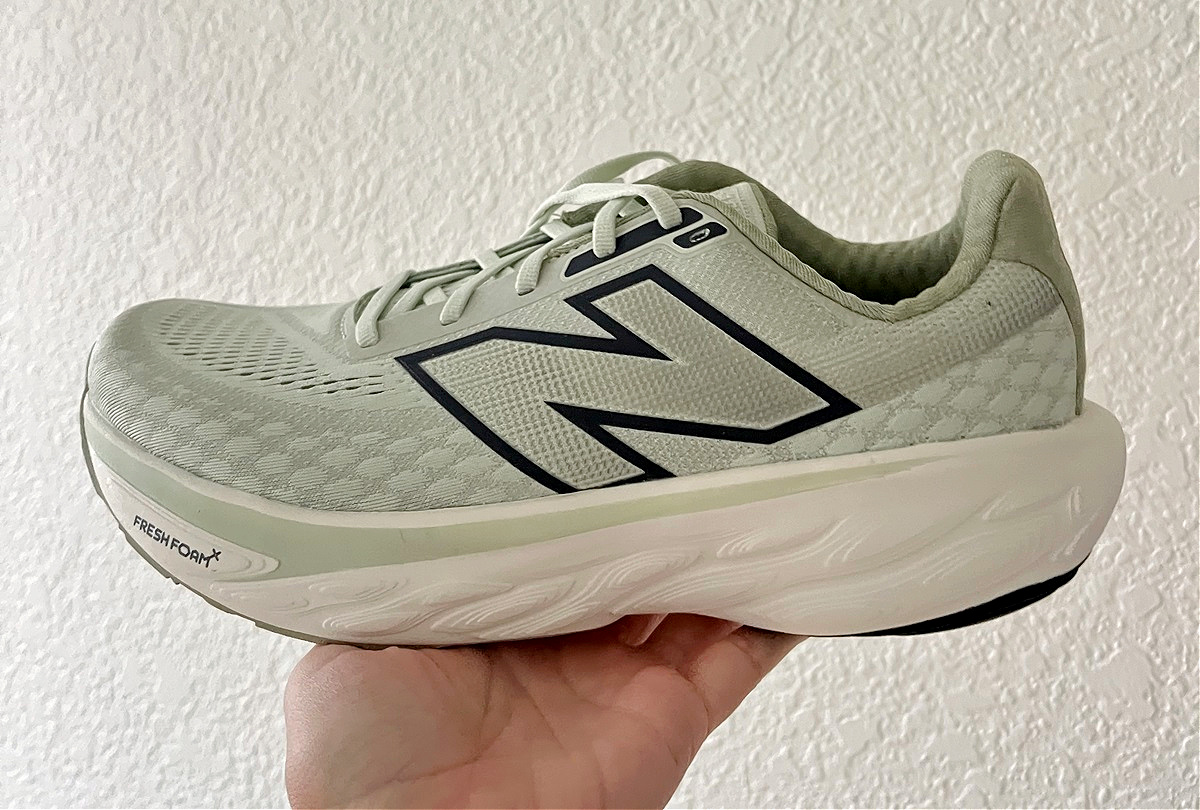
Carbon Fiber Plate Shoes
Are they cool new technology, yes. Do they last as long as your other shoes nope.
So if you want to test these out use them for speed work and then race day!
👉ZoomX VaporFly 3
I’ve tested all the Nike shoes that you’re seeing on the elites and while I did love the 3, the outsole ripped apart after about 10 miles of usage. So I’m still rocking the Vaporfly 2 for my short distance races and I do love it.
This is one of the lightest shoes with cushion I’ve seen. It’s truly got a bouncy feeling to it, which is the combo we’re looking for with the carbon fiber plate to create that reduction of energy and increase speed. Pricey shoe, but I like it.
It’s not a shoe I personally would recommend for the marathon, but could go up to a half marathon. Definitely runs more narrow even than some of their other shoes.
- Weight: 6.9 oz Men’s, 5.8 oz Women’s
- Heel drop: 8mm
- 2 colors available
- Not available in wide
- Available from Nike.com for $250
- Read my full Nike Vaporfly 3 review here >>

👉NB FuelCell Super Comp Elite v4
This shoe recently joined my rotation and I was obviously excited to try it as I’ve noted that i like the Fresh Foam. I’ve been testing it along side the Nike Vaporfly and let me say they are two VERY different experiences.
You’re getting that foam with less weight and the addition of the carbon fiber plate, making it another shoe designed for speed workouts and race day. It fits like most New Balance shoes, which cannot be said for all carbon fiber racing shoes and thus might be more comfortable for many.
It’s a firmer ride than many others who have gone with plusher foam.
- Weight: 8.1 oz Men’s, 7.2 oz Women’s
- Heel drop: 4 mm
- 1 color available
- Available in wide
- Available at newbalance.com for $250
- Check out our full review of the FuelCell Supercomp Elite v4 here>>
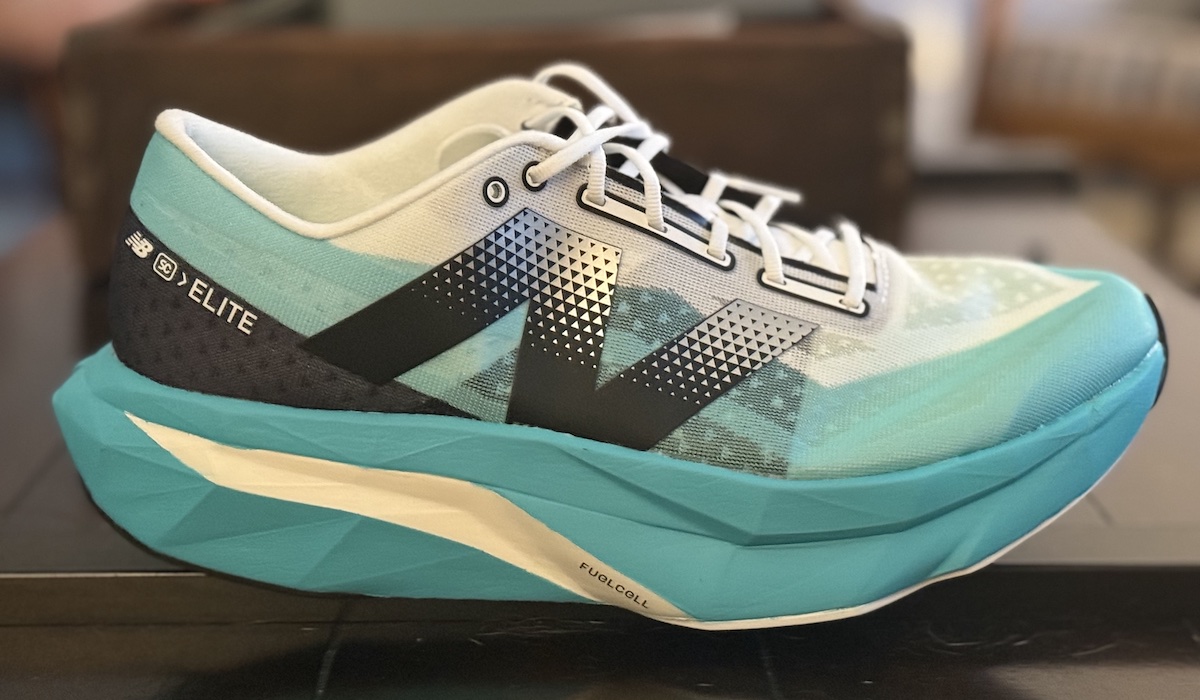
More About New Balance
New Balance actually started in 1906 as an arch support company! But their focus on feet is one of the reasons they do offer more sizes and widths than most other brands.
And that’s exactly what the Boston based company focused on until 1960. Athletes had begun using the arch supports and they decided it was time to venture in to sneakers.
The Trackster was the first shoe with a rippled outsole that provide additional traction. It caught on as a track and cross country shoe regionally.
But in 1976 the company released it’s first shoe with the well known N logo on the side and it was a success. They stuck to their goal of providing shoes for a variety of feet and took advantage of the 80’s running boom.
More About Nike
Is there anyone who doesn’t know the story of Nike yet?? The brand actually started in 1964 as Blue Ribbon Sports and didn’t take on the name of Nike the Greek Goddess until 1971.
If you haven’t read Shoe Dog by Phil Knight, it’s a wonderful book that gives you so much insight to the building of a company and a brand.
I fully understand not everyone loves Nike due to many of the practices we’ve seen with their athletes. I’m just here to provide details about the gear, you make those judgements.
In 1972, the Nike Waffle Racer was handed out at the Olympics and things really started to take off. One of these original pairs of shoes recently sold for almost $500,000!
From there they have continued to inovate and consistently produce new models of shoes for a variety of sports.
Nike has also dominated the marketing game.
How to Choose Nike or New Balance?
Nike and New Balance are two extremely well known running shoe brands, but more important than brand is the fit of the shoe.
Your gait and feet will change over time and you may need to change shoes.
This is also why I recommend rotating through several pairs of shoes at once.
And remember, just because these are two of the most well known brands on the market, there are still plenty of other shoe brands to select from if neither New Balance nor Nike has the right shoe for you.
Keep in mind that shoe design can change, even with the same model, so always assess how the shoe fits every time you replace a pair.
For more help selecting the right shoe for you, don’t worry, I’ve got you:
- Best Trail Running Shoes
- Top 5 Marathon Running Shoes
- Asics vs HOKA
- ASICS vs Brooks
- Best Running Shoes
Other ways to connect with Amanda
Instagram Daily Fun: RunToTheFinish
Facebook Community Chatter: RunToTheFinish
Sign Up to Receive a Weekly Newsletter with Top Running Tips and Laughs

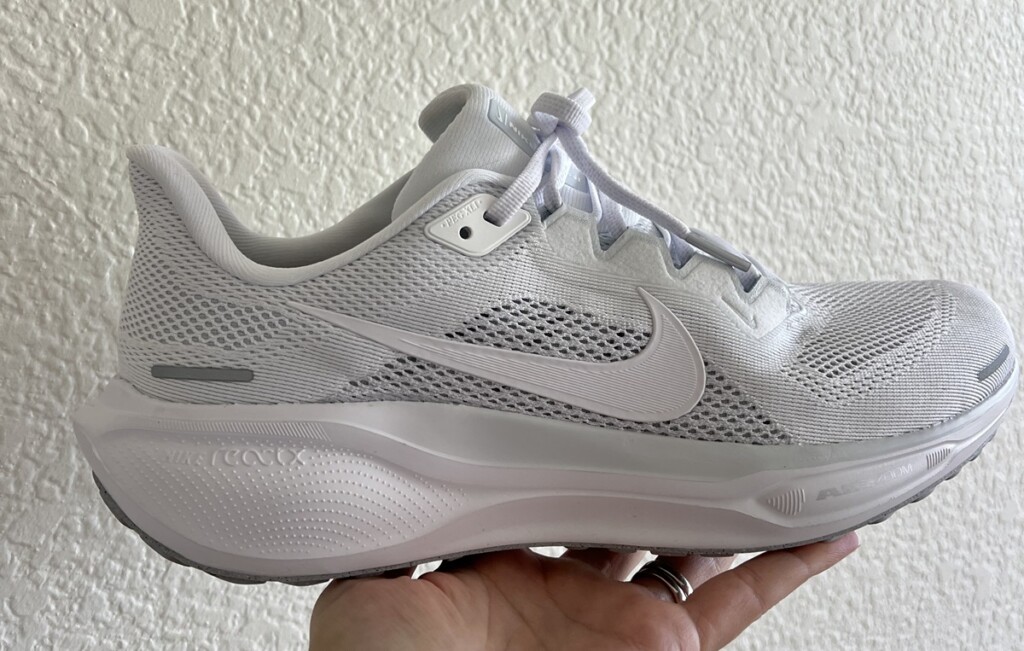


 KURU Atom 2 Review | All Day Comfort
KURU Atom 2 Review | All Day Comfort